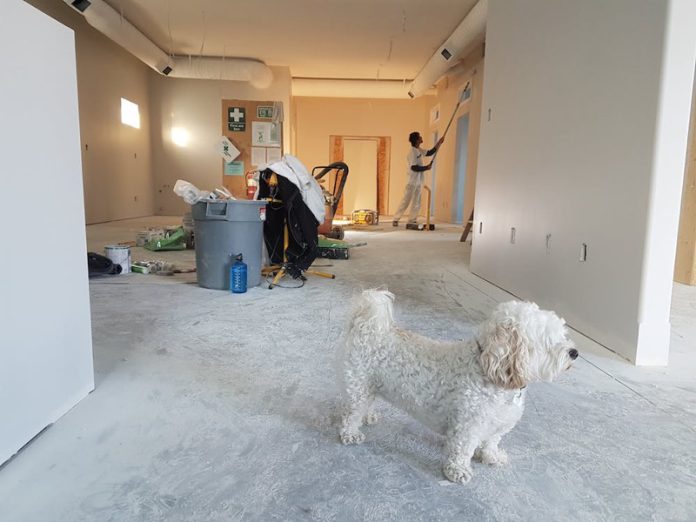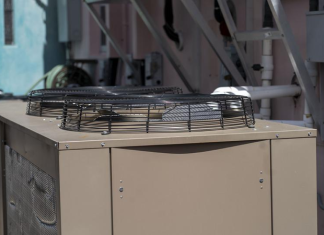Purchasing a new house serves as the perfect opportunity to renovate your home according to your style and preference. It’s an empty canvas awaiting the vibrant hues of your unique personality. And if you’re shifting to an old property, carrying out repair and maintenance tasks becomes crucial.
Before anything, factoring in the cost of your renovation project is crucial. It’s advisable to research renovation costs in your city before considering any renovation or remodeling project. For instance, in West Palm Beach, homeowners paid between $9,570 and $76,567 on average on house remodels in 2023. So, be wary of the cost and decide your budget before undertaking any home improvement project.
But moving to a new house often compels homeowners to undertake home improvement or repair tasks. If the following signs are visible in your new house, you need to renovate it:
1. Damaged Floor
Over time, the floor becomes susceptible to extensive damage, especially in areas like the kitchen and bathroom, where water seeps into tiles. Spills, moisture, and other issues can affect the floor’s resilience and longevity. The floor might also display several stains, cracks, and holes alongside being wobbly or creating creaking noises.
Apart from fixing floor damage, this renovation project allows you to transition from old, worn-out tiles to warm wooden floors. So, before moving into your new property, inspect the floor to determine if repairs are required. Get all the issues fixed before your furniture and other belongings arrive at your new place. For this purpose, it’s best to keep the movers informed.
Speaking of movers, if you’re moving to or from West Palm Beach, enlisting the assistance of long-distance movers is advised. To find a budget-friendly option, look up affordable West Palm Beach long distance moving company to streamline your move.
2. Roof Issues
The roof bravely bears the brunt of sun, rain, hail, and sometimes even those mischievous squirrels. Yet, its contribution is often overlooked until a droplet or two sneaks inside on a rainy day.
Tell-tale signs your roof requires repairs or replacement:
- The pitter-patter of unwanted raindrops inside hints at possible leaks.
- Damaged shingles with bare patches.
- Visible sagging, making the roof appear worn out.
- Granules from shingles fill up the gutters.
- Daylight peeking through the roof boards.
Given its pivotal role, occasional inspections aren’t only recommended; they’re essential. This proactive step can prevent minor issues from snowballing into significant, costly repairs.
3. Does Your Home Look Stuck in Time?
A home is a reflection of its owner. And while there’s comfort in familiarity, there’s also a thrill in embracing change. But seasonal home upgrades do not necessitate sacrificing functionality or aesthetics.
Modern Touches: Imagine sleek kitchens or minimalist lighting fixtures, infusing a dash of the contemporary.
Preserving History: Why not incorporate a rustic fireplace or vintage wooden beams? They tell tales of yesteryears and add character.
4. Limited Space
Whether it’s an addition to the family or simply the accumulation of memories (and things), the walls of your home can start to feel like they’re closing in. Luckily, there’s always a way to shuffle, adjust, and sometimes expand.
Strategies to make room for more:
- Repurpose that rarely used guest room into a home office or playroom.
- Use multipurpose furniture that offers storage solutions.
- Optimize vertical spaces with wall-mounted shelves and racks.
- Consider knocking down non-load-bearing walls to create an open floor plan.
- If feasible, think about adding an annex for more living space.
With some creativity and planning, every corner can be put to optimal use, ensuring you always have room to grow and breathe.
5. Pests Have Made It Their Home Too
It’s unsettling to think that while you’re enjoying the comforts of your home, unwanted guests might lurk in the shadows. Pests, especially the dreaded termites, can wreak havoc if left unchecked. These little invaders don’t just target food but compromise your house’s foundation.
So, to tackle this, it’s crucial to identify why they’re coming in the first place. Damp surroundings, food particles left out, or even tiny gaps in walls can serve as an invitation. Regular inspections and maintaining cleanliness are essential. And if the issue persists, seeking professional help is always a wise decision.
6. Signs of Age and General Wear
Everything ages, and our homes are no exception. While they offer shelter and warmth, they also show signs of wear and tear over time. Spotting these signs early allows you to preserve your home’s charm and avoid costly repairs.
What to keep an eye out for:
- Creaking and wobbly floorboards.
- Paint that’s chipped, peeling, or discolored.
- Roof tiles that are missing or damaged.
- Cracks in the walls or ceiling.
- Windows that don’t shut properly.
- Unexplained damp spots or mold growth.
Addressing these issues as they arise not only ensures a safer living space but also helps maintain the integrity and value of your home. After all, timely care is always better than costly repairs down the line.
7. Rising Utility Bills
A high utility bill can make anyone’s heart skip a beat. If you are taken aback month after month, it might not just be fluctuating rates. With their undeniable charm, older homes often lag in the energy-efficiency department.
Potential energy drains include:
- Windows that are drafty or don’t seal properly.
- HVAC systems have seen better days.
- Poor insulation allows heat to escape during winters and enter during summers.
- Inefficient lighting fixtures are consuming more power.
Looking into these areas and making necessary upgrades can offer a solution. While there’s an upfront cost to renovations, the long-term savings on utility bills make it a wise investment. A viable approach would be to install energy-efficient appliances and systems into your new house. This way, you can reduce utility bills while lowering your environmental impact.
Conclusion
Every homeowner desires to renovate their house. But moving to a new place often means that renovation becomes a necessity. If you’re moving to a new abode, look for signs of wear and tear to determine which areas require the most attention and effort. The floor, roof, windows, and exterior often necessitate home improvement. Apart from this, if your space is congested or infested with pests, you might need to tackle these issues as well.















